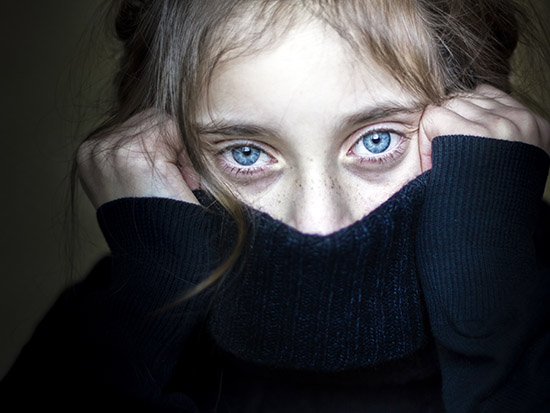Media contact: Yvonne Taunton
 Research reveals the ripple effects of childhood trauma and school suspensions. Every day, children across the nation experience traumatic events.
Research reveals the ripple effects of childhood trauma and school suspensions. Every day, children across the nation experience traumatic events.
About 61 percent of adults surveyed across 25 states reported they had at least one type of adverse childhood experience, according to the Centers for Disease Control. ACEs carry vast perils into adulthood and, especially if not treated, can lead to chronic health problems, mental illness and substance abuse.
“Adverse childhood experiences are an indicator of childhood adversity and victimization in the home,” said the University of Alabama at Birmingham’s Lindsay Leban, Ph.D., an assistant professor in the College of Arts and Sciences’ Department of Criminal Justice. “ACEs cover many household adversities a person has experienced, often including physical abuse, sexual abuse, neglect, emotional abuse, witnessing intimate partner violence, parent mental problems, parent substance abuse, parent criminality/incarceration, and family trauma.”
A comprehensive research study conducted by Leban and Marlow Masterson, a graduate of UAB’s Criminal Justice program, examined how ACEs and suspensions in school impact high school dropout rate and arrests by age 18.
Leban and Masterson co-wrote the paper, “The Impact of Childhood School Suspension on Dropout and Arrest in Adolescence: Disparate Relationships by Race and Adverse Childhood Experiences.” The study is currently in production for publication in the journal Criminal Justice and Behavior, and explains how suspensions increase the likelihood of dropping out of school and getting arrested.
Masterson says their interests in theories inspired the paper.
“My goal is to work with children previously involved in the juvenile justice system,” Masterson said. “Dr. Leban and I focused on quantitative data between formal labeling and adverse childhood experiences as it pertains to both high school dropouts and arrests. We analyzed data from the Longitudinal Studies on Child Abuse and Neglect.”
School suspensions, in general, are harmful and related to negative outcomes for youth, some of which include arrest and high school dropout, Leban says.
“Although a large body of research has documented the relationship between suspension and negative outcomes, it remains less clear how other sources of disadvantage and adversity may affect these relationships” Leban said. “We look at how two sources of disadvantage and adversity — being a racial minority and having experienced high ACEs — affect the relationships between suspension and high school dropout and arrest.”
The study found that suspension and high ACEs increased the likelihood of dropout by age 18 and arrest by age 18, regardless of race.
“However, we found an interaction for Black youth only,” Leban said. “High ACEs and suspension had a compounding effect on dropout for Black youth only, meaning that the impact of ACEs and suspension by age 12 was particularly damaging for Black youth as it related to dropout. So, for Black youth, having high ACEs and being suspended made dropout more likely than for white youth.”
“High ACEs and suspension had a compounding effect on dropout for Black youth only, meaning that the impact of ACEs and suspension by age 12 was particularly damaging for Black youth as it related to dropout.”
Leban recommends that educators screen for ACEs and be mindful that students of color and those with high ACEs, particularly students who received suspensions, may need additional resources and support to develop protective factors that can help them overcome some of these disadvantages.
Cumulative disadvantage theory determines how early advantage or disadvantage groups change over time. The authors used this method to learn why Black youth experienced high ACEs.
“This perspective led us to expect that additional disadvantages are more harmful to Black youth because their racial status places them in a more disadvantaged structural position,” Leban said. “Alternatively, white youth may have accumulated fewer sources of disadvantage or potentially possessed additional coping skills and social resources that equipped them to overcome the added burden of suspension, ultimately reducing their likelihood of dropping out.”
Leban and Masterson’s findings highlight the need for policy to mitigate the impact of risk and disadvantage in the lives of youth and emphasize the need for additional attention to sources of adversity in the school environment.
“There should be more attempts to integrate healthy and supportive alternatives to suspension,” Leban said. “School policies should consider minimizing suspensions as an approach for addressing problem behavior in schools, perhaps in favor of evidence-based preventive practices.”
Leban says future research should investigate two focuses:
- Specific pathways through which suspension and ACEs can lead to an increased likelihood of dropout and arrest
- Protective factors that can reduce negative impacts of suspension and ACEs
“We need to examine precisely how suspension leads to mediating processes and look at how these may, in turn, affect dropout and arrest,” Leban said. “Understanding these mediating processes can help us gain more insight into how suspension and ACEs can compound the risk for Black youth. The reality is not all kids exposed to risk factors will fare poorly. We need to look at kids who manage well, to understand resilience to adversity and disadvantage despite the risk.”